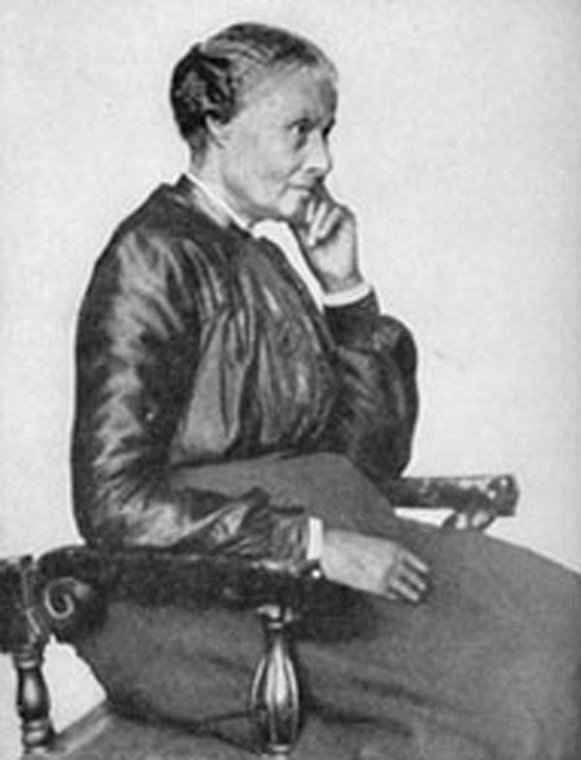Our nation remembers it was 50 years ago this week that Rosa
Parks was arrested by Montgomery, Ala., police for refusing to give
up a bus seat to a white man. By remaining seated, Parks stood up
against injustice. Her courageous act ignited a movement against
oppression.
Our nation remembers it was 50 years ago this week that Rosa Parks was arrested by Montgomery, Ala., police for refusing to give up a bus seat to a white man. By remaining seated, Parks stood up against injustice. Her courageous act ignited a movement against oppression.
Parks died in October and her body laid in state under the Capitol Rotunda. She’ll long be honored in United States history as “the Mother of Modern Civil Rights.”
But America’s first Mother of Civil Rights, some historians insist, is Mary Ellen Pleasant – a woman whose life has a link to South Valley’s own history.
Like Parks, Pleasant took a stand against racial tyranny. And, like Parks, Pleasant suffered discrimination on a public transit system – and refused to take it. You’ve never heard of this Pleasant? I hadn’t either until I read a chapter about this amazing African-American woman in “Under the Shadow of El Toro,” a history of the Morgan Hill community.
In 1814, Pleasant was born a slave near Augusta, Ga. She was the illegitimate child of John H. Pleasants, the son of a Virginia governor, and a Haitian Voodoo priestess. Early in life, she witnessed a brutal plantation boss torture and kill her mother.
At age 9, a sympathetic abolitionist bought her out of slavery and sent her to New Orleans. There, she entered Ursaline Convent and worked as a free servant as she received an education.
About a year later, the girl was sent to Nantucket, Mass., to work for a Quaker merchant as a clerk in a general store. The job taught her the business skills that later helped her make millions.
At age 24, Pleasant moved to Boston and found work as a tailor’s assistant. Here, she married James Smith, a wealthy mulatto merchant who served as an operative on the Underground Railroad. Soon, Pleasant began working as a volunteer on this covert enterprise aiding blacks in escaping their bondage.
James died in 1848, leaving Pleasant $45,000 in bonds which she converted into gold. The now-wealthy woman married her husband’s former foreman, John James Pleasance, and continued her work rescuing slaves. But by 1850, plantation owners tried to hunt her down for setting free their human “property.” She and John fled to New Orleans.
John continued on to California to take part in the gold rush. Two years later, on April 7, 1852, Pleasant joined him in San Francisco. Taking on a white identity because she had no freedom papers that would give her immunity from California’s Fugitive Slave Act, she set up a popular restaurant business specializing in Cajun cuisine.
Pleasant’s financial prudence and charisma enabled her to expand her business endeavors considerably. Becoming friends with some of the richest and most powerful men in San Francisco, she became a community activist, obtaining favors to find jobs for the city’s “colored” population. The local blacks called her “the black city hall.” With her status as “voodoo queen of San Francisco,” she soon held a psychological control over the city’s black population.
In 1858, Pleasant traveled to Canada to meet John Brown, the fiery-tempered abolitionist. For more than a year, she served as his sole agent to help him in his ambition of sparking a slave uprising.
Against her advice, Brown tried unsuccessfully to take the arsenal at Harper’s Ferry, Va. Captured in the raid and hanged, he became a martyr for the anti-slavery cause.
With Brown dead, Pleasant headed back west. She stopped for a time in Cape Girardeau, Mo., at the plantation home of Hiram Sloan. There she met Sloan’s grandchildren, the young Hiram Morgan Hill and his sister Sarah Althea Hill. She stayed to take care of the grandchildren, and formed a close bond with them.
On returning to San Francisco, Pleasant built her various enterprises, including investments in quicksilver, buying real estate, and running boarding houses and brothels. She also used her position of influence to uncover lurid secrets about the city’s respected leaders. She used the information in blackmail schemes.
In 1866, as age darkened her skin, Pleasant listed herself as a “Negro” in San Francisco’s social directory. She also did this to sue the city’s bus and streetcar company for not allowing black people to ride. In 1868, she received $500 in the judgment. The company appealed, and the California Supreme Court overturned the initial ruling. But Pleasant’s case served as a precedent for anti-discrimination legislation in the Golden State. In 1893, the State Assembly passed an a law prohibiting segregation on streetcars.
At Pleasant urging, when they were old enough, the orphaned Morgan Hill and his sister moved to San Francisco in 1870. She introduced the children to the elite of the city’s society. Morgan fell in love with a young lady named Diana Murphy who, against her father Daniel Murphy’s wishes, he eventually married. The South Valley land the couple inherited eventually became the city of Morgan Hill.
Over time, the former slave built a fortune of $30 million. Unlike Rosa Parks who will forever be considered the patron saint of Civil Rights, Pleasant often ruthlessly manipulated and took advantage of people. Some blacks who worked for her suggested the ambitious businesswoman even murdered in her quest for wealth.
With the decline of her health and reputation, Pleasant lost her fortune. California’s Mother of Civil Rights died in poverty. She was buried in a Napa cemetery on Jan. 11, 1904. At her request, her tombstone reads: SHE WAS a FRIEND OF JOHN BROWN.
Perhaps on the surface, the characters of America’s Mothers of Civil Rights seem poles apart. Rosa Parks’ reputation will never tarnish. Mary Ellen Pleasant’s shady standing has probably blinded most people to her impact on American history.
But the women share some things in common. They saw the flaws of American bigotry. They hated the injustice of racial discrimination. They both stood firm to shine the spotlight of truth on the oppression of a mistreated people.











